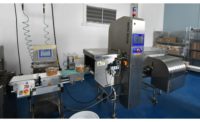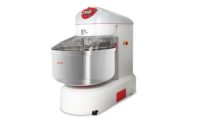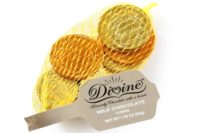Keeping pests out when you decide to bring in new equipment

Introducing new equipment to your manufacturing plant often means introducing new policies, procedures and training for your employees. If you fail to consult with your pest management professional, it may also introduce new challenges with pest pressures in your facility.
With the installation of new machinery, it’s critical that you think ahead about how you will keep it clean on a daily basis. You’ll need to have easy access underneath, in the cracks and crevices between walls and storage and to the working parts within the equipment, too. Your pest management professional can help you save time and future trouble by giving you tips on how to avoid the moist and sheltered environments where pests like to gather. This consultation should be part of your current Integrated Pest Management (IPM) program.
Facility inspection and repairs are easier when the space is empty
If you don’t consider sanitation requirements when considering the purchase and placement of new equipment, it may be too late to fix once the new machinery is in your plant. And, that will spell trouble in the form of dangerous pathogens that insects and rodents can spread to your people and products. In the extreme, it can result in costly product delays, recalls and even a dent to your brand’s reputation if things get out of hand.
The removal of old equipment and installation of replacement machinery gives you an ideal opportunity to examine structural issues in older facilities. It also is the perfect time to conduct a deep clean before the new equipment is installed.
Once the old equipment is removed, be sure to check any wall voids, ledges and crevices that are perfect harboring points for pests. Repair any cracks or holes that are exposed before moving your shiny new machine inside. It’s likely that newer machinery will be more efficient and may not require the same connection points as your older model. Be sure that any gaps or holes left by your old equipment are repaired and filled before your new equipment arrives.
Cleaning equipment and spacing
All areas beneath and behind new equipment need to be accessible. Avoid the temptation to squeeze a larger machine into a tight space—it may make that machine impossible to clean once it’s operational. That doesn’t seem evident when you are admiring the features of your new equipment in a catalog or showroom, but, trust me, you’ll have buyer’s remorse if food, moisture and odors start to collect because your new machine is too big for your space.
Remember, pests don’t need a big gap to gain access. That’s another reason why the individual parts of your new equipment should be easy to clean on a regular basis. Cockroaches, for example, can fit through a gap a quarter of an inch, while even a larger pest like a mouse can fit through a gap the size of a dime. While you probably can’t get into each piece of equipment on a daily basis, make a point to include these areas on your regular sanitation schedule and plan human-sized access areas that make cleaning and maintenance easy.
Your staff should be instructed on the importance of regular inspections and cleaning inside your machinery. It may add a few minutes to your weekly or monthly sanitation procedures, but it’s more than worth it in the long run.
Air circulation is another important consideration
At any facility, it’s important to establish positive air flow, which means that air is flowing outward through any doors and windows instead of flowing into the facility.
Flying pests, in particular, can be sucked inside if you have negative air flow. Often, it doesn’t take more than a strong breeze to move them through doors and windows. You can check for positive air flow by standing in an open doorway when the air is still and holding up a vertical sheet of paper. If it blows toward the inside, then you are facing the possibility of pest penetration.
Most facilities install air curtains to discourage flying pests, but sometimes these units fail to work properly. Facility managers should run these systems continuously and plan on regular inspections and maintenance to keep bugs out.
Establishing proper air flow also means ensuring your facility has good circulation. You don’t want stale odors and moisture to linger because those will attract pests. Certain pests, like psocids (book lice) don’t attack flour, but they will feed on molds caused by wet conditions. It’s important to watch for these tiny wingless insects, especially in the washdown areas of bakeries. Other pests to watch for if moisture accumulates are small flies and cockroaches.
Consider working with an HVAC professional to ensure you’re getting the best possible results for your buildings. An air flow system should always decrease the intensity of heat, moisture and humidity within your facility. Not only will proper airflow reduce pest attractants, but it can also help mitigate the spread and growth of pathogenic bacteria.
Plan ahead to make sure that your new equipment will not disrupt the positive air flow you’ve established.
Waste Management
Whenever you make a change to your facility, it’s also a good time to evaluate the placement of your waste management areas.
Every single trash receptacle within your facility should have a lid to prevent odors from emanating constantly throughout the day. You should take each of these units outside to the dumpster at least daily—if not more often. Food and liquids can seep through the liner bags, so these receptacles should also be washed regularly.
Your waste collection vendor should empty your dumpsters on a regular basis to keep pests from breeding inside. It’s ideal to also use a cleaner to remove lingering particles and break down any residual materials that could beckon pests to stick around. Even if your dumpster is empty, once pests find a haven there, they will be closer to moving inside where they can do big damage.
Snack and bakery facilities—with stores of flour products and sweet ingredients—are especially enticing for pests. That’s why it’s critical that you keep them out when you decide to bring upgraded or new machinery.
Looking for a reprint of this article?
From high-res PDFs to custom plaques, order your copy today!






